SQUIRREL_13098351
I've wanted to try an air fryer for a while, since I started seeing them pop up online. The idea of getting deep-fried food without all the extra oil is appealing, but I couldn't justify the counter or cupboard space.
But what if I could air fry in a microwave? The Combi Wave 3-in-1 from Sage offers just that – a microwave, air fryer and convection oven all in one. Its Fast Combi mode uses all three functions at once to cook everyday meals faster.
Cooking with the Combi Wave 3-in-1
Straight out of the box, I was surprised by how big the Combi Wave is. I suppose I shouldn't have been – I knew that you could roast an entire chicken in it. At 61 x 56 x 38.4cm, it fits in the gap left by my previous (already large) microwave, but only just.
The settings are controlled by two dials and a selection of buttons, and are shown on a large display screen. The menu is intuitive and easy to navigate, and a bit of fiddling around revealed more options than I expected. On the inside of the door is a series of buttons for preset options, from popcorn to melting chocolate.
The oven preheats quickly, and on all settings will tell you when to insert and turn your food. However, annoyingly, it doesn't pause to give you a chance to do this, and moves onto the cooking phase straight away. This isn't a huge problem – it just means you have to make sure you have everything ready before you start the programme.
You can choose whether it alerts you with a beep or a jingle, and change the volume or mute it. The fans, however, are quite noisy.
I cooked a variety of foods in the Combi Wave to try out its various functions. Where possible, I also prepared the same thing by a traditional method to compare the two. There are a lot of different options for cooking, so I used the provided recipe book for guidance on what functions to use and for how long.
Jacket potato
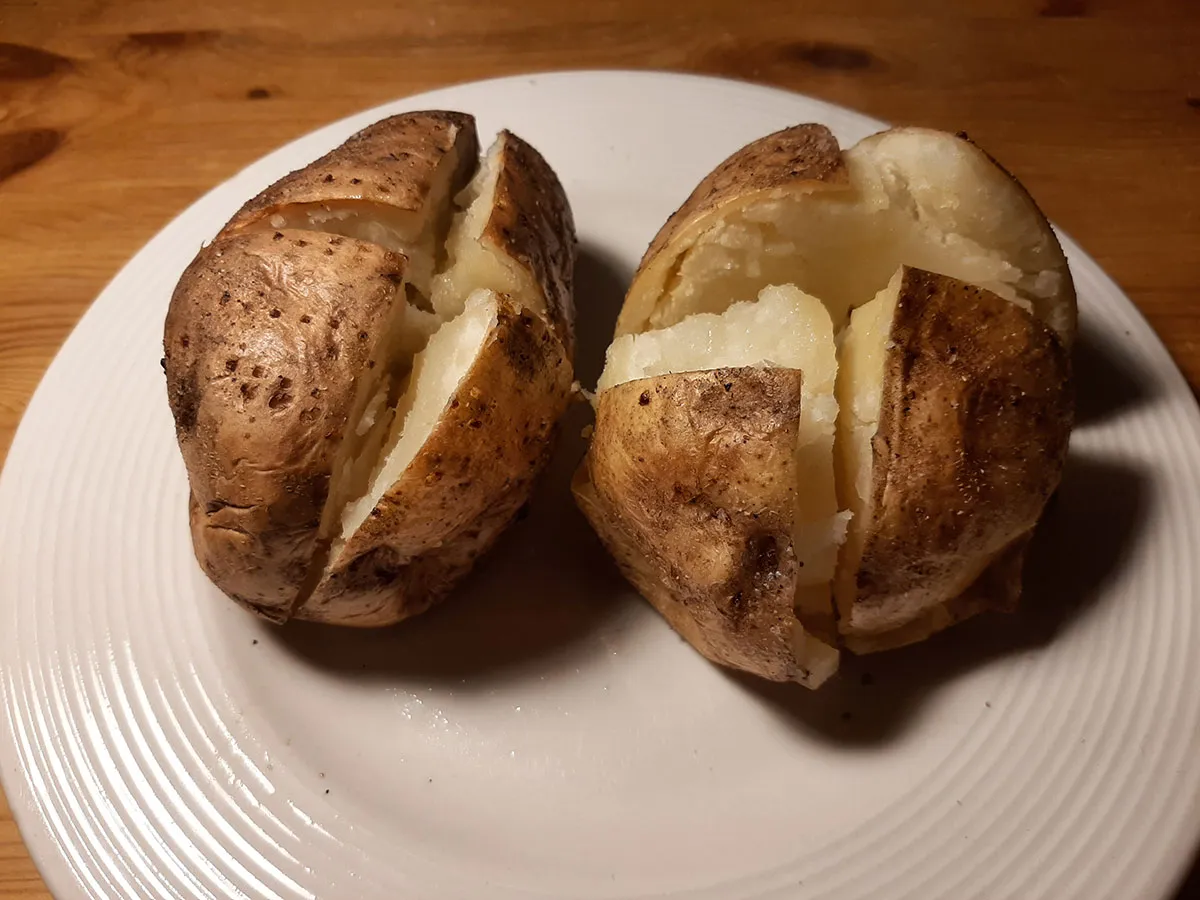
It's not easy to make a good jacket potato in a microwave. Though the flesh of the potato cooks faster than in an oven, the skin never crisps up properly. So, I was excited to see if the Combi Wave could be the best of both worlds and make a crispy jacket potato without an hour-and-a-half cooking time.
The results were disappointing. Following the instructions in the recipe book, I put it in on the Fast Combi setting for 45 minutes, but the result was still hard in the middle and the skin was soft. It's hard to say whether the problem was just bad instructions – extra time would certainly have softened the centre of the potato, but I'm not sure whether the skin would have crisped up.
Brownies
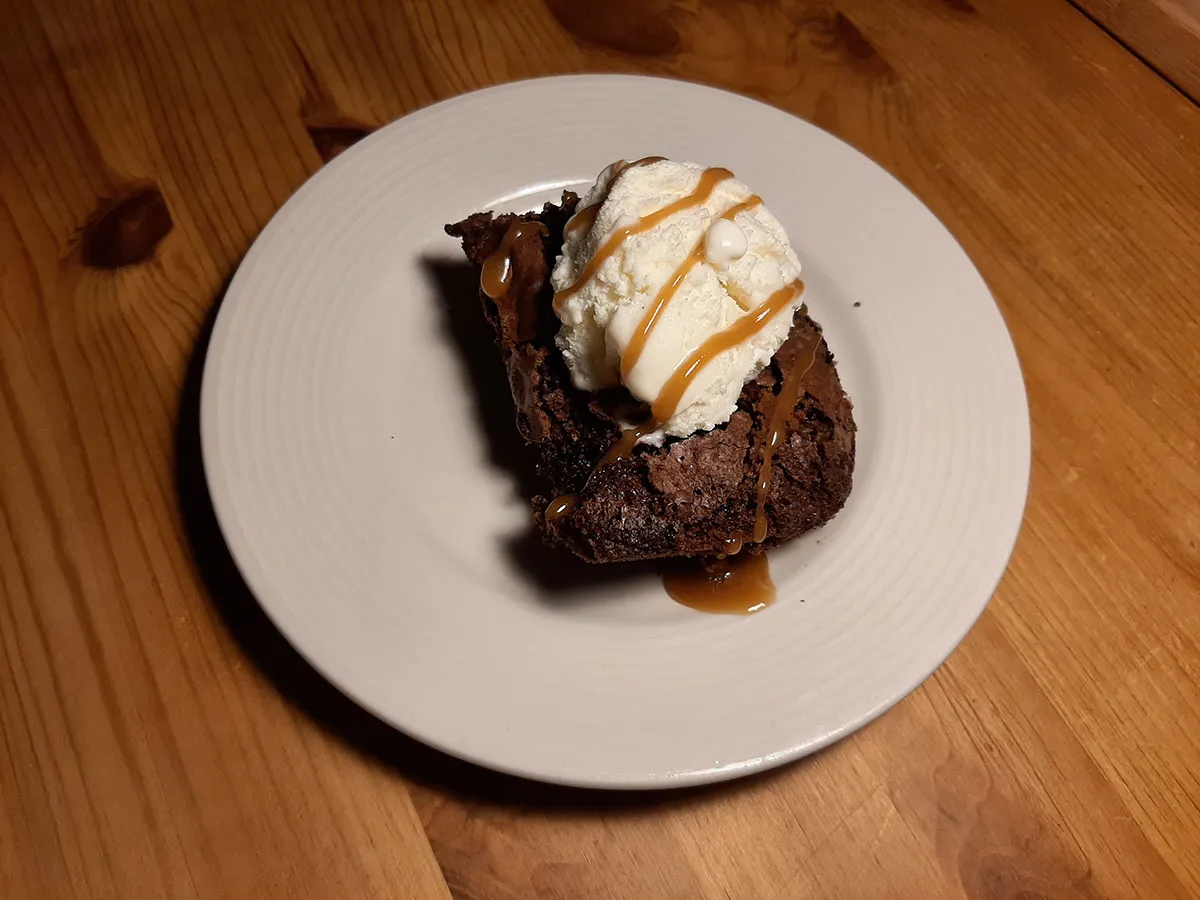
As someone who bakes as a hobby (and has made a few microwave mug cakes in the past), I found it hard to imagine that baking in a microwave could turn out well. But I was pleasantly surprised by the brownies and salted caramel sauce from the provided recipe book.
It's a standard recipe, cooked with the oven mode. When I took it out after the recommended time, it was still liquid in the centre, so I gave it an extra 15 or so minutes. But once it had cooled, it turned out to be deliciously gooey and rich, with a pleasantly chewy crust.
I wouldn't recommend making salted caramel sauce in the microwave, though. Though the method is incredibly easy, the sugar crystallised and the sauce ended up gritty. I'd suggest making the same recipe in a saucepan instead, brushing down the inside of the pan with a damp pastry brush to stop crystals from forming.
Prawn katsu
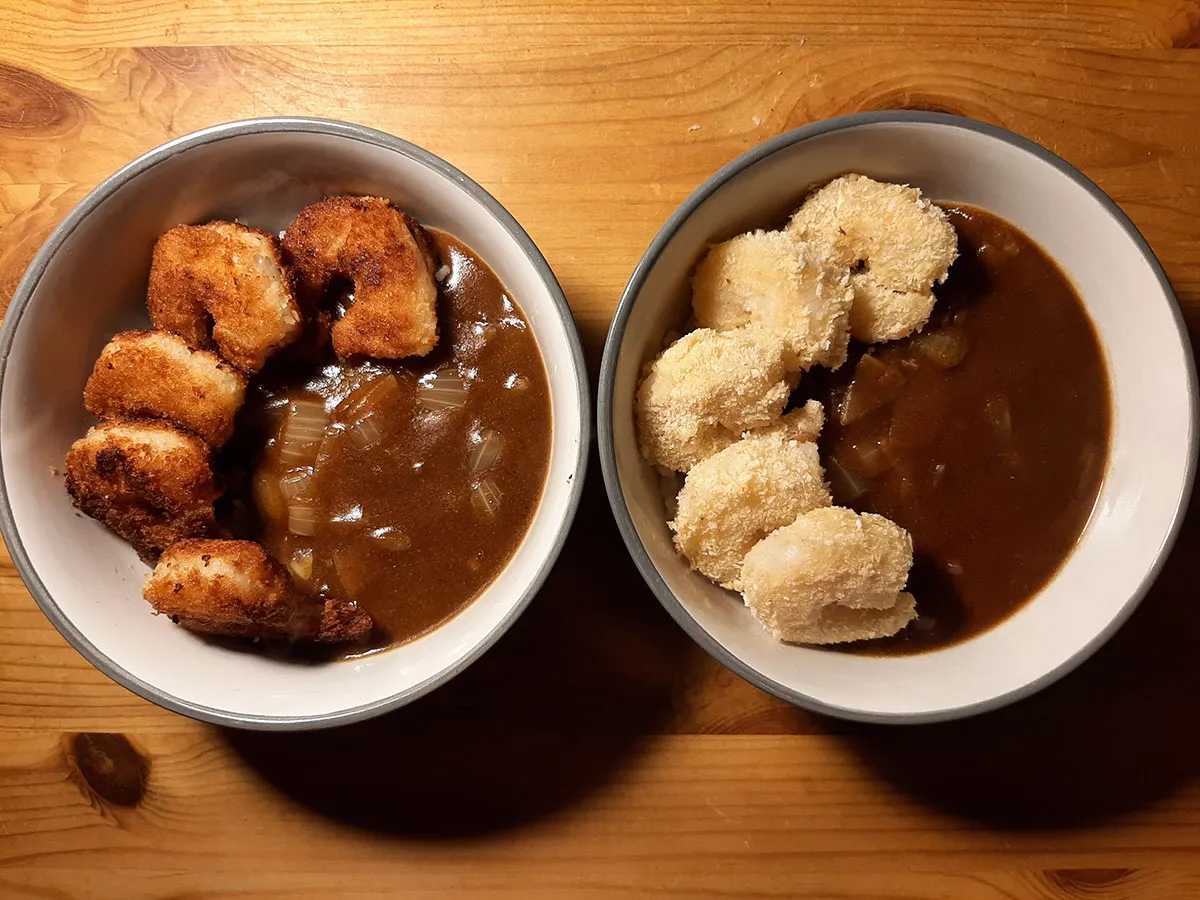
I'll be honest, the most exciting thing about an air fryer for me is to be able to eat fried foods without feeling guilty about the amount of oil. So, if I could make crispy, golden katsu with only a spritz of oil, I would be a total convert to air frying.
Following the recipe provided, I dunked king prawns first in flour, then egg, and then panko breadcrumbs. I cooked half of them on the air fryer setting for seven minutes with a coating of cooking oil spray. At the same time, I shallow-fried the other half in vegetable oil.
When I took them out, I was disappointed to see that the panko breadcrumbs had barely browned at all. The air-fried prawns were cooked through, but compared to shallow-fried prawns, they had much less flavour.
I ended up browning the air-fried prawns in the pan before I ate them, to make them a little more appetising.
Roast chicken
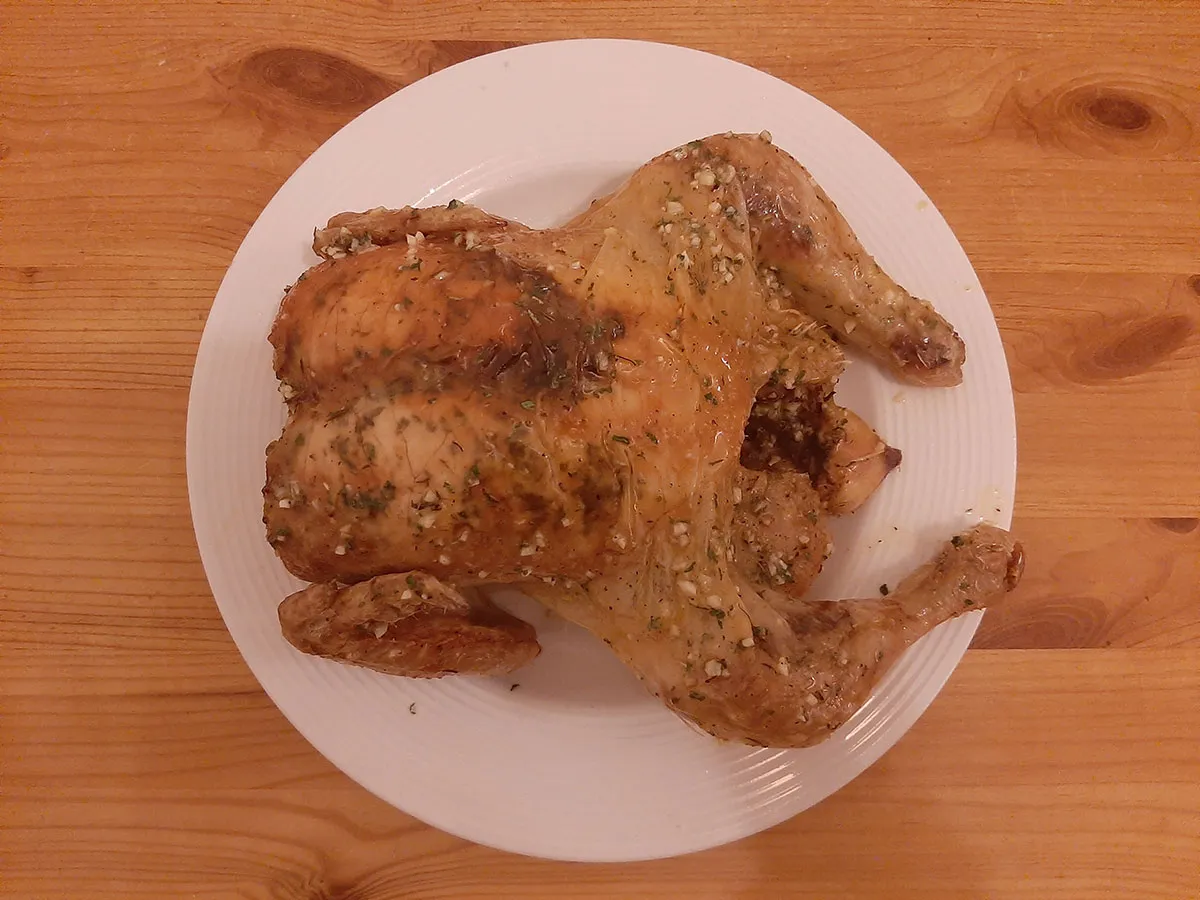
Roast chicken was easily the best thing I made in the Combi Wave. The preparation is the same as if it was going in a regular oven – though the Combi Wave preheats much more quickly than my oven, so I got caught out by it finishing the preheat phase and starting the cooking phase before I was ready. I made a garlic and herb butter, which I spread underneath the skin, and seasoned the outside with salt and pepper, and into the microwave it went.
The Combi Wave has a function specifically for chicken, so all you need to do is select the correct weight and let it do the rest. The two largest increments are 1kg and 1.6kg, so I was concerned that my 1.2kg bird would end up underdone or dry. I chose the 1.6kg option, on the basis that dry chicken is better than food poisoning.
This turned out to be the juiciest roast chicken I have ever made. The skin was deeply browned, and the meat was tender and flavourful.
The circular pan is only 26cm in diameter, so there's no room for trimmings and I had to cook the roast potatoes in my oven. It's a shame that such a big countertop cooker can't fit more than one food in at a time, but on the other hand, cooking the roast potatoes separately meant I could crank up the heat on the oven and get them crispy without drying out the meat.
For juicier meat and no worries about it being cooked all the way through, I would definitely choose to roast a chicken in the Combi Wave again.
Chicken drumsticks
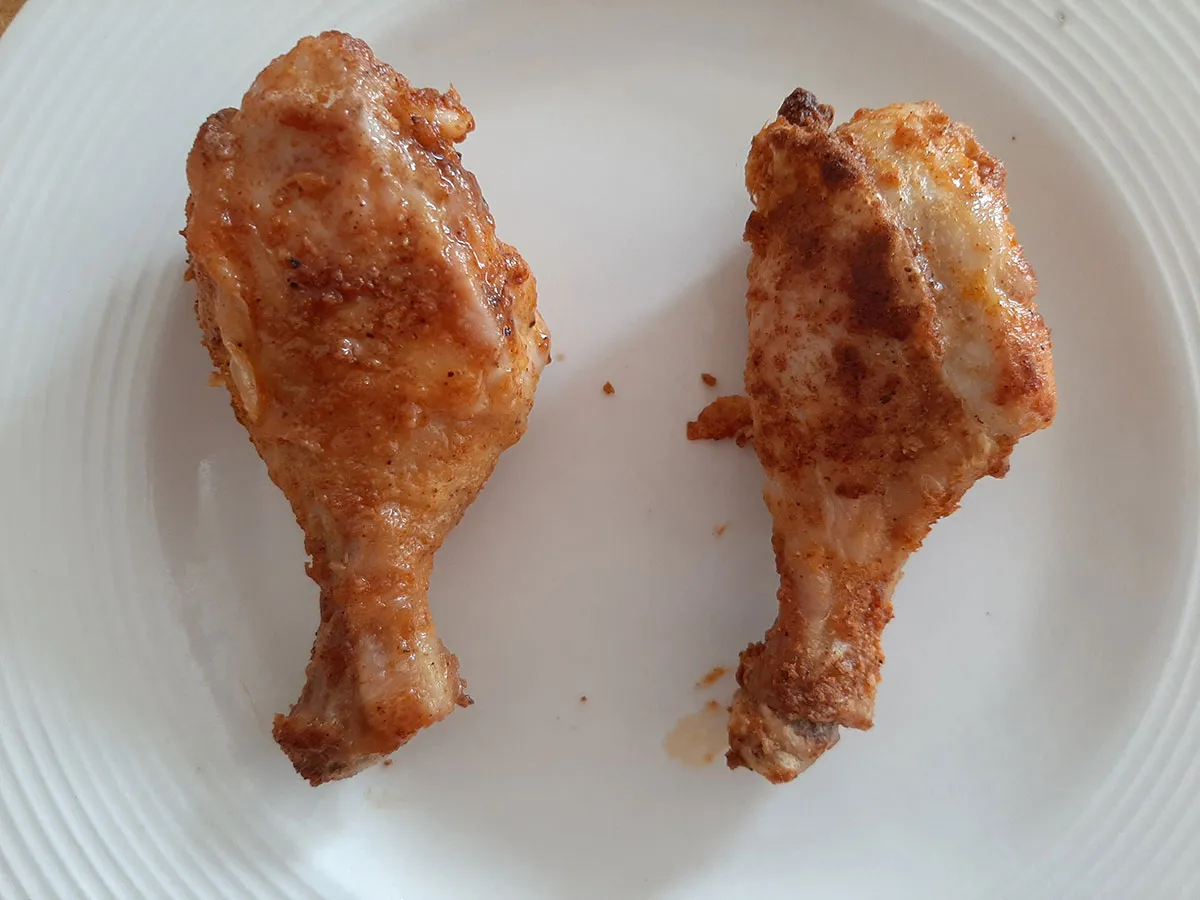
I used this recipe for crispy chicken drumsticks, and cooked half with the air fryer mode on the Combi Wave, and half in the oven. For both halves, I cooked them at 200˚C for 10 minutes on each side.
There wasn't a huge difference between the two, but the air-fried ones had slightly crispier skin. The oven-cooked drumsticks leaked more liquid, and the meat of the air-fried ones was juicier as a result. This probably also helped to make the skin crispier.
Oven chips
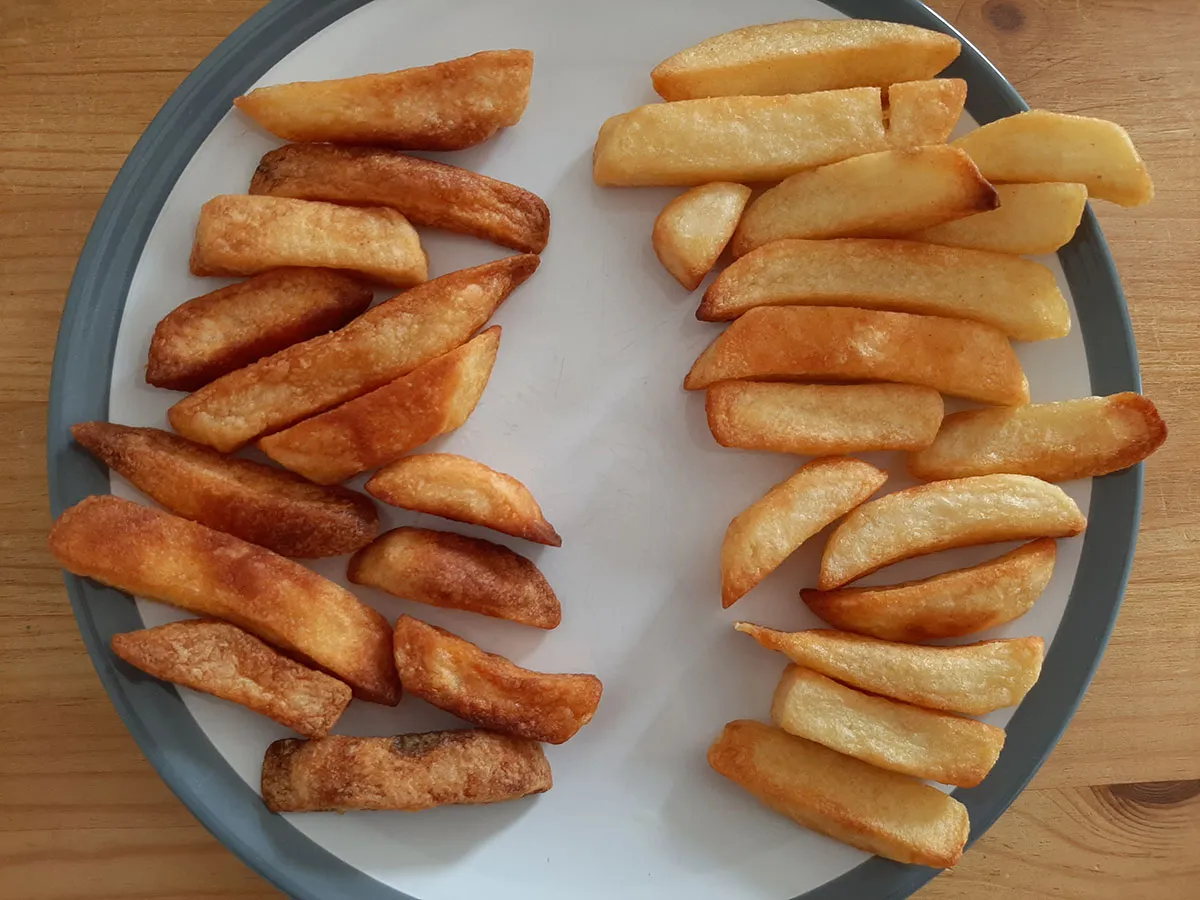
I air-fried some oven chips in the Combi Wave for 25 minutes at 230°C, according to the guide on the machine, and cooked some in the oven for the same amount of time at 200°C.

The air-fried chips were much browner and crispier, but the smaller ones were over-done. While the oven-baked chips were soft and fluffy inside, the air-fried ones were dry and a bit crunchy.
Extra functions
Soften butter
You'd think that, after years of baking, I'd have learned that there are certain ingredients you should get out of the fridge ahead of time to let them come up to room temperature. But no. I still struggle through with too-solid butter.
The 'soften butter' function on the Combi Wave works like a charm. It came to a perfect consistency for creaming with sugar (or mixing with garlic and herbs for a roast chicken) without any of it melting.
Defrost
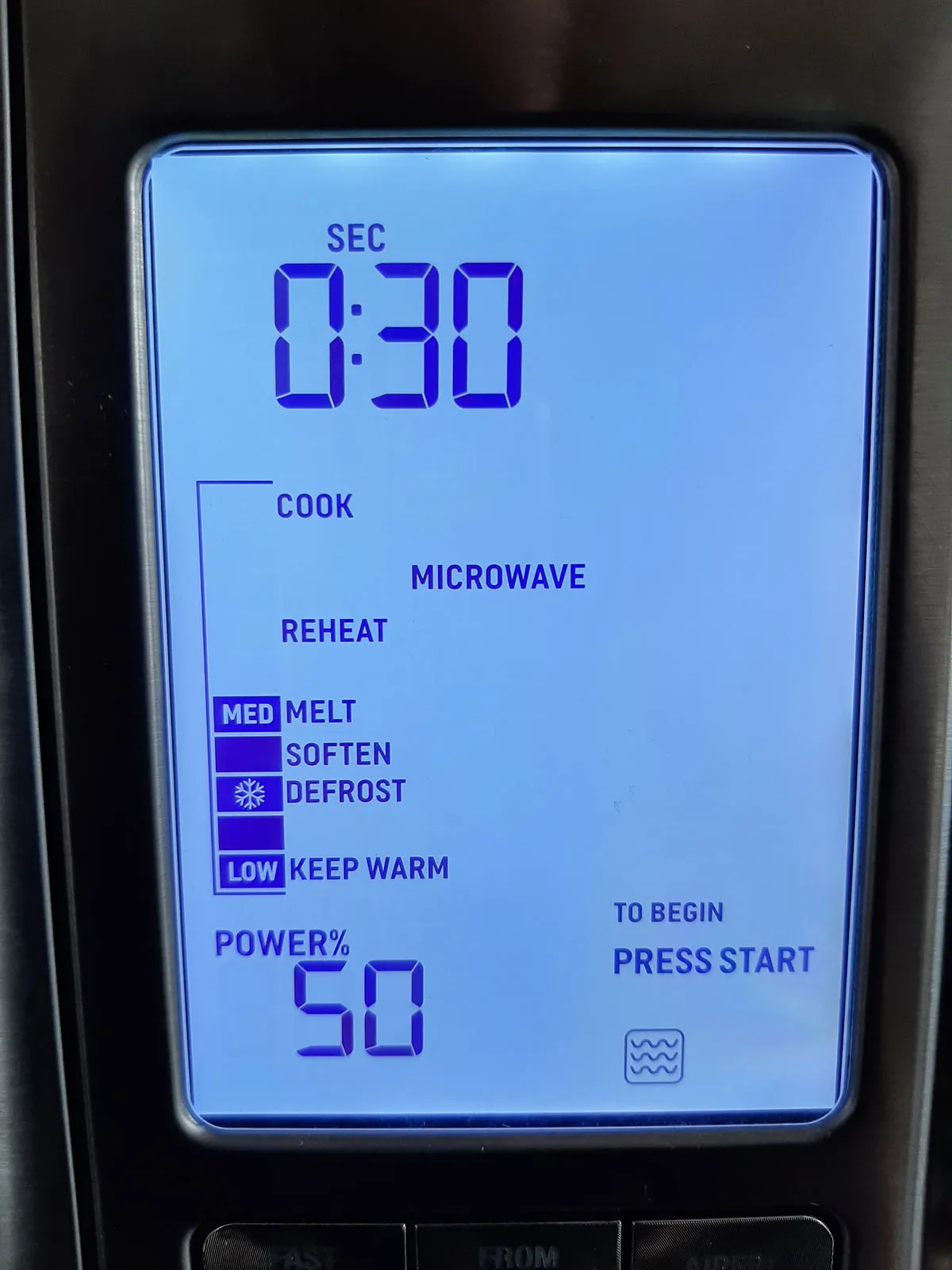
On the microwave function, you can dial the power down to different percentages, and the display shows what each power level will do. Unlike previous microwaves I've owned, the defrost setting actually defrosts food without cooking any of it.
Keep warm
My two air-fried chicken drumsticks were done before the ones I cooked in the oven. So, I left one in the microwave on the 'keep warm' setting while I taste-tested the other. When I took it out, it was still piping hot, and the skin was even slightly crispier than it was before – unlike a lot of fried food I've made, which can go soggy quickly.
Verdict
If you don't have space for a full oven, the Combi Wave is a great choice. You won't be able to cook everything you'd do in an oven – for example, a side of roast potatoes for your roast chicken – but it's still a surprisingly versatile cooker.
The air fryer mode isn't particularly impressive, and for most applications I tried it wasn't much different from what's possible in an ordinary convection oven. That said, it's difficult to know whether that's the limitation of an air fryer, or whether the provided recipes needed tweaking. And both the air-fried chicken drumsticks and roast chicken were better than ones cooked in an oven.
I would recommend the Combi Wave 3-in-1 not as a replacement for an oven, but as an amped-up microwave that's one valuable appliance in your kitchen.
SQUIRREL_13098351
Alternative combination microwaves to consider
Panasonic 4-in-1 Combination Steam Oven
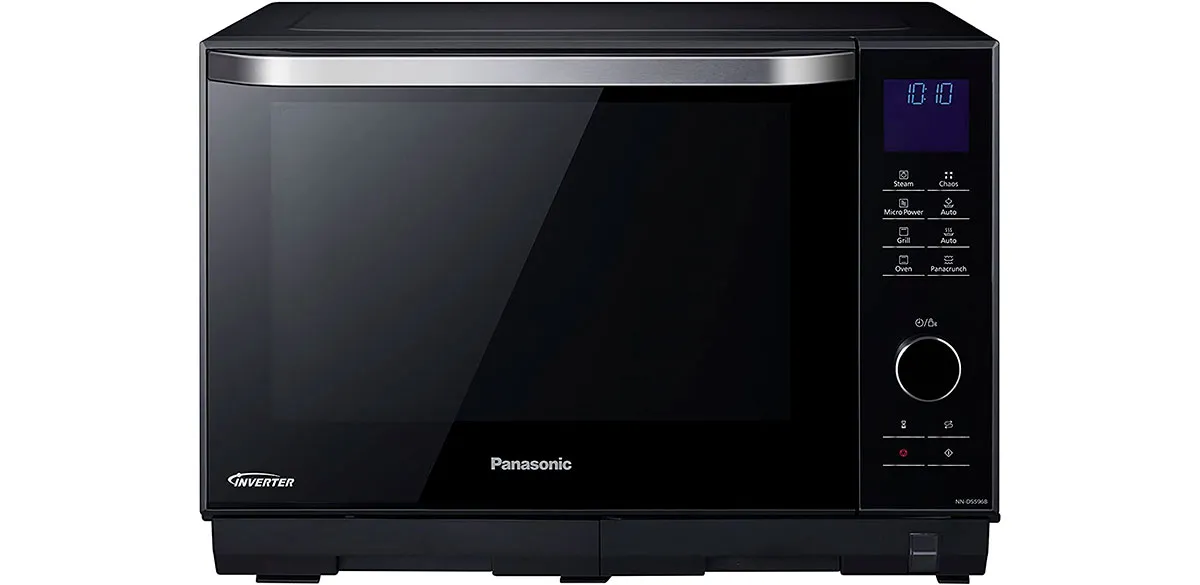
This combination oven allows not just microwaving, baking and grilling, but also steaming. Once you've filled the appliance's 800ml reservoir, it will boil this water to produce steam and release it through two steam outlets.
With a 31 litre capacity and cooking over two levels, there's plenty of space to prepare several foods at once.
The 4-in-one Combination Steam Oven also features a grill, and 36 preset functions that combine the different cooking elements to suit different types of food or drink.
Russell Hobbs RHM3003B Combination Microwave
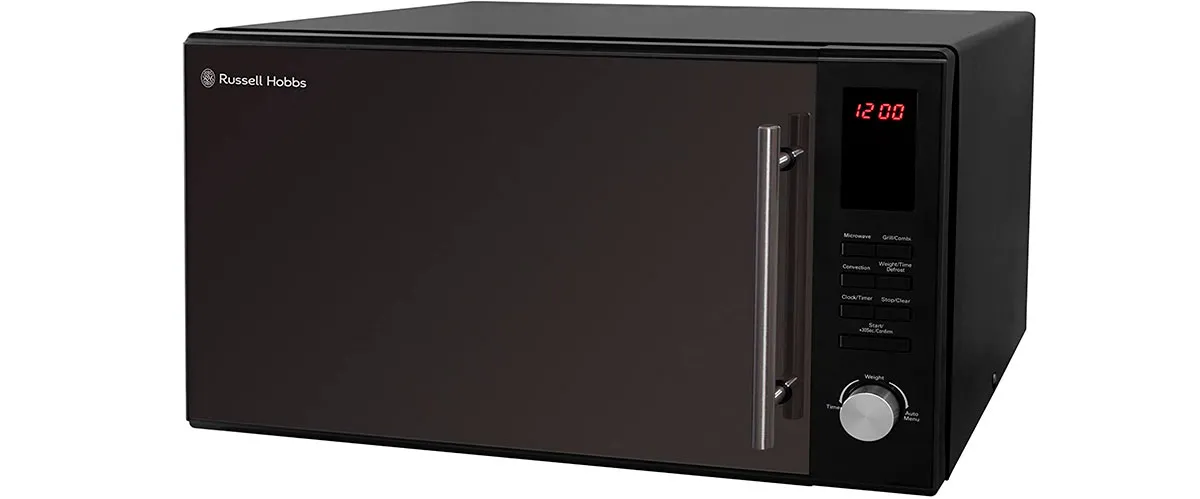
The Russell Hobbs RHM3003B Combination Microwave is a more affordable option, if the Combi Wave is a bit too pricey for your liking. As well as a microwave, this appliance also features a convection oven and grill. It comes with a grill rack and baking tray, and has a capacity of 30 litres.
KitchenAid KMQFX33910 Combination Microwave
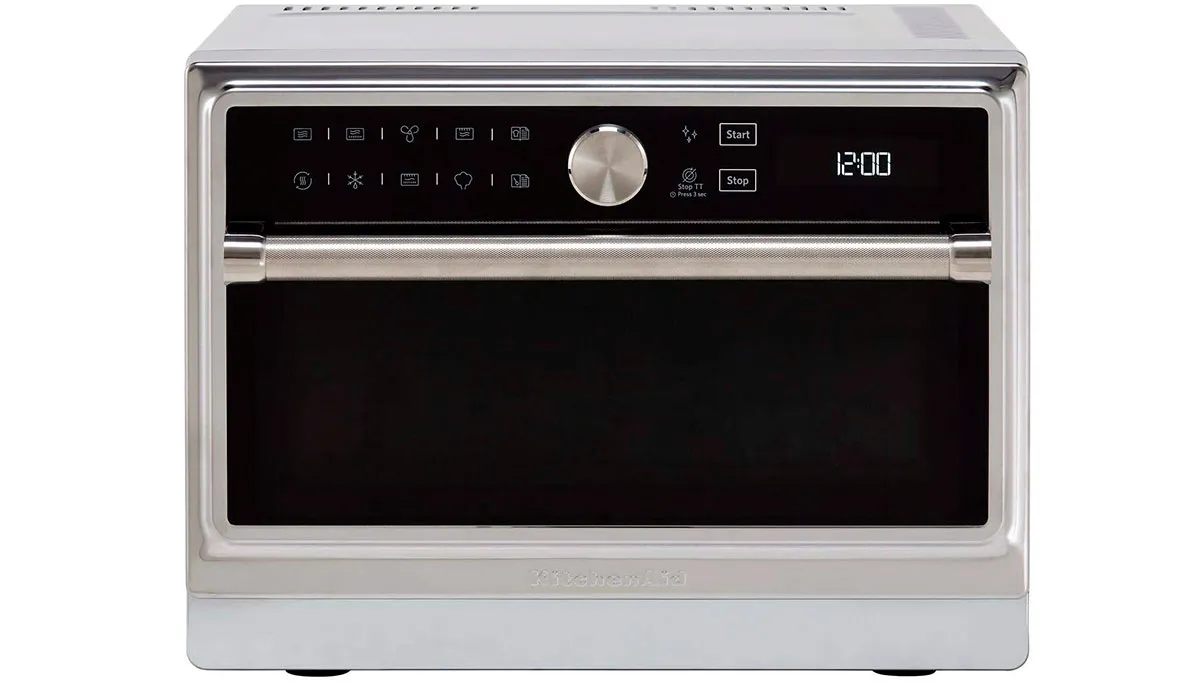
This combination microwave from KitchenAid looks swish, with its stainless steel surfaces and grab handle. But it's also packed full of features. Like the Panasonic, it offers steam cooking, but with the dual steam function, you can cook two separate foods at once. It also comes with a crisp plate that heats up quickly, which is designed for pizzas, chips, samosas and more.
The KitchenAid is also designed with baking in mind, with features such as a dough rising programme and Crisp & Bake Technology for even, golden results.